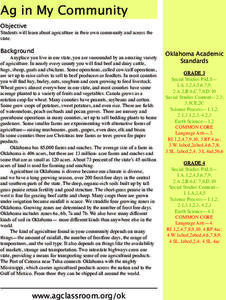Curated OER
Vocabulary: Kansas Prairies
Students explore the ecosystem by reviewing scientific vocabulary terms. In this environmental awareness activity, students identify the differences between abiotic and biotic factors and their relationship to the Earth. Students define...
Curated OER
ESL: An/An/Some
For this ESL a/an/some worksheet, students choose the correct article to place before given items, 40 total. A link to audio and additional resources is given.
Curated OER
The Gruffalo
In this The Gruffalo worksheet, students listen to the story The Gruffalo, sequence sentences, choose the correct words in sentences, and more. Students complete 4 activities.
Curated OER
Passive or Active Exercises
In this active and passive voice worksheet, students choose which voice the sentences are in. Students complete 21 problems total.
Curated OER
Kindergarten Children Online Test
In this labeling worksheet, students label Disney characters and numbers with the correct words, and fill in the blanks to sentences based on pictures. Students complete 3 activities.
Curated OER
Confusing Words
In this confusing words worksheet, students choose the correct confusing word to complete the sentences. Students complete 20 sentences.
Curated OER
Killer spiders invade Sydney!
Ninth graders examine the issue of killer spiders in Sydney, Australia. In this Sydney history instructional activity students read an article and answer guided reading questions. Students complete a quiz with a partner on the...
Curated OER
Great British Dishes
Sixth graders examine the different types of famous British dishes. In this British culture lesson, 6th graders research different types of British food. Students create a presentation about Great British food.
Curated OER
Pizza Topping Combinations
Students brainstorm pizza toppings and determine the number of possible ways to order a pizza. In this algebra lesson, students analyze and investigate geometric patterns as they relate to the concept of a variable. Students then use a...
Curated OER
Science and Math Lab (Students Look at Symmetry in Nature)
Learners study patterns. In this symmetry in nature instructional activity, students examine objects to determine what type of symmetry they have. They work in small groups to rotate through stations that have objects for them to study.
Curated OER
Edible Wild Plants
Learners explore the benefits of recognizing edible wild plants. In this wild plant lesson, students collect, make ready and eat edible plants. Learners answer questions about the plants.
Curated OER
Observation Hike
Students participate in an observational hike to study the natural surroundings. In this observational hike instructional activity, students hike through a state park and observe the plant and animal life. Students learn about...
Curated OER
What Do We Mean by "Living Things"?
Students discuss the characteristics of life. In this living things lesson students complete a lab while working in groups. Students examine different organisms and create a poster to present to the class.
Curated OER
Rotting Food
Students put bread out on a plate for a few days and put it under a microscope when it begins to mold. In this rotting food lesson plan, students discuss eating old food and what it does to your body.
Curated OER
Possible Outcomes 6
In this math worksheet, 6th graders make predictions of the possible outcomes using the data taken from two word problems. The answers are chosen from the outcomes that are possible using the multiple choice format.
Curated OER
Pizza Fractions
For this pizza fractions worksheet, students "build" pizzas as indicated, coloring given fractions of toppings on pizzas. A reference web site is given for additional activities.
Curated OER
Vegetables: Printing Practice
In these vocabulary acquisition worksheets, learners learn several vocabulary words for vegetables. Students trace the words, print them, and write them on their own.
Curated OER
Fungi
Students study fungi and its parts. In this exploring fungi instructional activity students fill out a worksheet that includes a diagram of fungi and questions.
Curated OER
Microorganism Multiplication
Seventh graders complete two experiments to learn about harmful and helpful microorganisms. In this microorganisms lesson, 7th graders read background information about fungi, yeast, and club fungi. Students then complete two experiments...
Curated OER
Pizza Toppings 2
Students explore possible combinations of items. They devise and use problem solving strategies to explore situations mathematically. They examine using linear and quadratic patterns to solve combination problems. From a given...
Curated OER
Vegetable Tiles
In this vegetable words worksheet, students use the vegetable words from the word box to complete the letter tiles that correspond to the shape of the letters in each word.
Curated OER
Diversity
Students observe that there are many forms of living things by going for a walk and also by observing living things in the classroom.
Curated OER
Autumn
Students examine the cycle of nutrients in a forest. They research the concepts of decomposing and recycling within a forest.
Curated OER
Agriculture
Students examine the types of agriculture in their own state and in their local community. They examine how food makes it to their local grocery store. They compare data from different states.
Other popular searches
- Mushrooms Sylvia Plath
- Lesson Plan Mushrooms
- Mushrooms Are Living Things
- Mushrooms Plath
- Mushrooms Lesson Plans
- Mushrooms English Resources
- Oyster Mushrooms
- Mushrooms English Resoures
- Dissecting Mushrooms
- Mushrooms English Reassures
- Growing Mushrooms

























